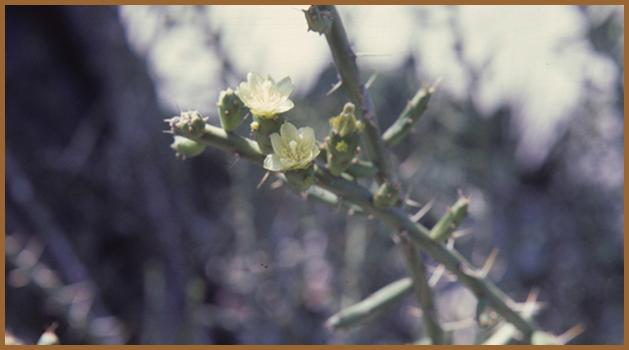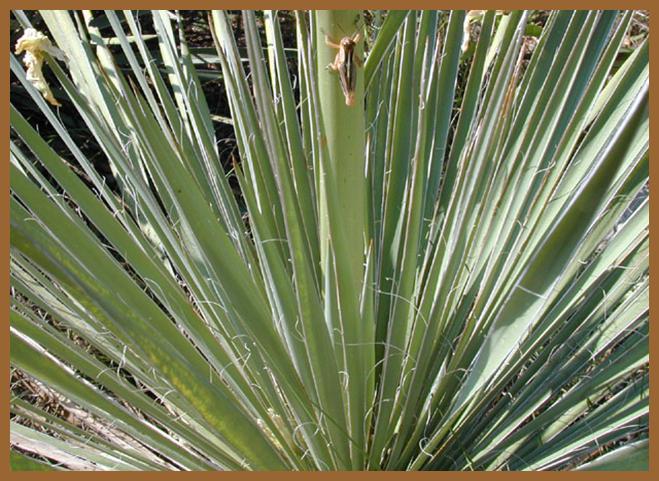Guide to SA Natural Areas & Greenway Trails
L: TASAJILLO

LBJ Wildflower Center NPIN 24641 by Harry Cliffe
Alamo Area Master Naturalist Stan Drezek is the author of this piece.
COMMON IN PHIL HARDBERGER PARK
Pencil Cactus, Turkey Pear, Jumping Cactus, Christmas Cactus—how can one plant have so many names? Tasajillo is a relatively common cactus in our park. A close look at its parts may explain the multiple common names. It has thin, brittle stems, colorful winter fruit, and a brushy growth habit. Tasajillo provides nesting sites for Cactus Wrens, and its fruit is a good food source for birds and other small animals.
PRICKLY PEAR, TOO
The other cactus to look for on your walk is the Prickly Pear (Opuntia engelmannii). It is the state plant of Texas and so prevalent in Hardberger Park that we cover it in a separate talking point.
ADAPTATIONS
Why are cacti present in our park at all? The answer is two-part. First, Bexar County lies at the juncture of three of Texas’ Natural Regions: the Blackland Prairie, the Edward’s Plateau, and the South Texas Brush Country. The South Texas Brush Country is home to the thorny shrubs and cacti we often see. Second, cacti are ideally suited to survive in our hot, dry environment. While far from being dominant species, cacti are definitely common in Phil Hardberger Park.
Look more closely at the Tasajillo here. What is the main difference you see between it and the surrounding woody vegetation? The most obvious difference is the lack of leaves and the presence of spines (actually, modified leaves). In addition to the absence of leaves, most succulents are also characterized by unique features that reduce water loss:
- Photosynthesis in stems instead of leaves;
- Cylindrical, spherical, compact shapes;
- Thick, often waxy, outer surfaces;
- Viscous, internal structures that retain water;
- Quickly generating surface roots that pick up water from light rains or heavy dews.
Cacti also have other adaptations. Did you know that the pads of prickly pear tend to be oriented east-west so that the smallest surface area possible is exposed to the sun? Check out the next grouping of Prickly Pear you come across. Are the pads oriented east-west? Many cacti are ribbed, because a ribbed shape easily expands quickly to take in water and provides a design that minimizes the surface area exposed to the sun. Can you visualize how spines can provide both shade and surfaces that guide and capture dew and light rain? Some cacti have so many spines that they create a humid micro-climate near the cactus’ surface, thereby reducing water loss.
NON-CACTI ADAPTORS
High temperatures in excess of 120° that would kill many herbaceous plants can be tolerated by cacti. Besides cacti, you should look for two other plants common to Hardberger Park which exhibit adaptations to hot and dry climates: Twist-leaf Yucca (Yucca rupicola) and Thread-leaf Yucca (Yucca constricta). If you look carefully, you will spot both of these along the trail.
LBJ Wildflower Center Twist-leaf Yucca NPIN 11566 and Thread Leaf Yucca NPIN 13552 both by Joseph A. Marcus

